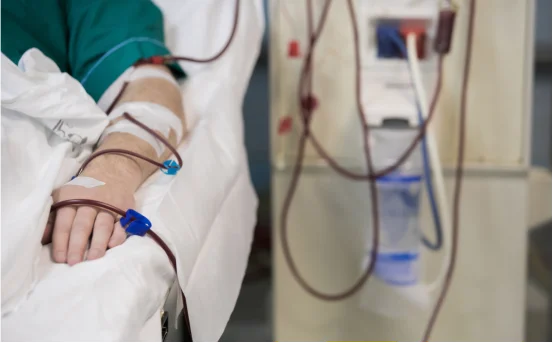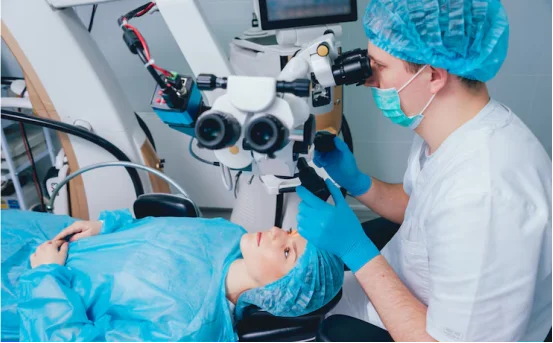What is Dialysis a medical treatment that performs the essential functions of the kidneys when they can no longer do so on their own. It helps remove harmful toxins, excess fluids, and waste materials from the bloodstream, allowing patients with advanced kidney disease or kidney failure to live longer and healthier lives.
When your kidneys stop functioning properly, your body cannot eliminate waste and excess fluid effectively. This is where dialysis comes into play a life-saving treatment for people with kidney failure.
What is Dialysis?
Dialysis is a medical process that mimics the function of healthy kidneys. It removes waste products, toxins, and excess fluids from the blood when the kidneys can no longer perform these vital functions.
The treatment is commonly used for patients with end-stage renal disease (ESRD) or severe chronic kidney disease (CKD). Without dialysis or a kidney transplant, waste products can build up in the body, leading to serious health issues, even death.
Why Is Dialysis Needed?
Dialysis becomes essential when the kidneys lose about 85-90% of their function, and glomerular filtration rate (GFR) falls below 15. Some key conditions that may lead what is dialysis include :-
-
Diabetes (diabetic nephropathy)
-
High blood pressure (hypertensive nephrosclerosis)
-
Polycystic kidney disease
-
Glomerulonephritis
-
Acute kidney injury (in some cases)
Symptoms that indicate kidney failure and the need for dialysis may include :-
-
Severe fluid retention or swelling
-
Fatigue and weakness
-
Nausea and vomiting
-
Confusion or difficulty concentrating
-
Shortness of breath
-
Irregular heartbeat
Types of Dialysis
There are two main types of dialysis: Hemodialysis and Peritoneal Dialysis. Each works differently and has its own benefits and limitations.
Hemodialysis
Hemodialysis is the most common type. It involves filtering your blood using a dialysis machine and a special filter called a dialyzer.
How it works :-
-
Blood is drawn from the body through a vascular access (usually in the arm).
-
The blood passes through the dialyzer, which removes waste, excess salt, and fluids.
-
Clean blood is returned to the body.
Frequency :-
-
Typically 3 times per week
-
Each session lasts 3–5 hours
Performed :-
-
In a hospital, dialysis center, or at home (with training)
Peritoneal Dialysis
Peritoneal dialysis uses the lining of your abdomen, called the peritoneal membrane, as a natural filter.
How it works :-
-
A sterile cleansing fluid called dialysate is introduced into the abdomen through a catheter.
-
The dialysate absorbs waste and excess fluids from the blood vessels in the peritoneum.
-
After a set dwell time, the fluid is drained and replaced with fresh dialysate.
Types of Peritoneal Dialysis :-
-
Continuous Ambulatory Peritoneal Dialysis (CAPD) :- Done manually 3–5 times a day.
-
Automated Peritoneal Dialysis (APD) :- Uses a machine to perform exchanges during the night.
Choosing the Right Type: Hemodialysis vs. Peritoneal Dialysis
The choice depends on :-
-
Patient’s lifestyle
-
Age and overall health
-
Kidney disease stage
-
Medical history
-
Personal preference
The Dialysis Procedure: Step-by-Step
Let’s look at what is dialysis is typically performed.
Hemodialysis Procedure :-
-
Vascular Access Creation :-
-
A surgeon creates an AV fistula or AV graft in the arm weeks before treatment begins.
-
-
Connecting to the Machine :-
-
Needles are inserted into the access site.
-
Blood is drawn, filtered, and returned.
-
-
Monitoring :-
-
Blood pressure, heart rate, and machine performance are continuously monitored.
-
-
Session Ends :-
-
Needles are removed, and bandages are applied.
-
Peritoneal Dialysis Procedure :-
-
Catheter Insertion :-
-
A soft tube is surgically placed into the abdomen.
-
-
Filling :-
-
Dialysate is poured into the peritoneal cavity.
-
-
Dwell Time :-
-
Fluid stays in the cavity for hours to absorb waste.
-
-
Draining :-
-
Used fluid is drained and replaced with fresh dialysate.
-
Benefits of Dialysis
-
Life-saving support for patients with kidney failure
-
Improved quality of life and symptom relief
-
Home-based options provide more freedom
-
Prevents complications like fluid overload, uremia, and high potassium levels
-
Bridge to kidney transplant in eligible patients
Potential Risks and Side Effects
While dialysis is generally safe, some risks and side effects may include :-
Hemodialysis Risks :-
-
Low blood pressure (hypotension)
-
Muscle cramps
-
Infections at the access site
-
Anemia and fatigue
Peritoneal Dialysis Risks :-
-
Peritonitis (infection of the abdominal lining)
-
Hernias
-
Catheter malfunction
-
Weight gain (due to glucose in dialysate)
Life on Dialysis: What to Expect?
What is dialysis changes your routine, but with good management, many patients lead full lives.
Diet and Lifestyle :-
-
Low potassium and sodium diet
-
Fluid intake restrictions
-
High-protein diet
-
Avoid phosphorus-rich foods
-
Regular exercise with doctor’s approval
Emotional Health :-
-
Joining support groups
-
Speaking with counselors
-
Involving family in the care journey
Conclusion
What is dialysis is a crucial treatment that gives people with kidney failure a second chance at life. While it comes with lifestyle changes and certain risks, modern medical advancements have made it safer, more accessible, and adaptable to individual needs.























